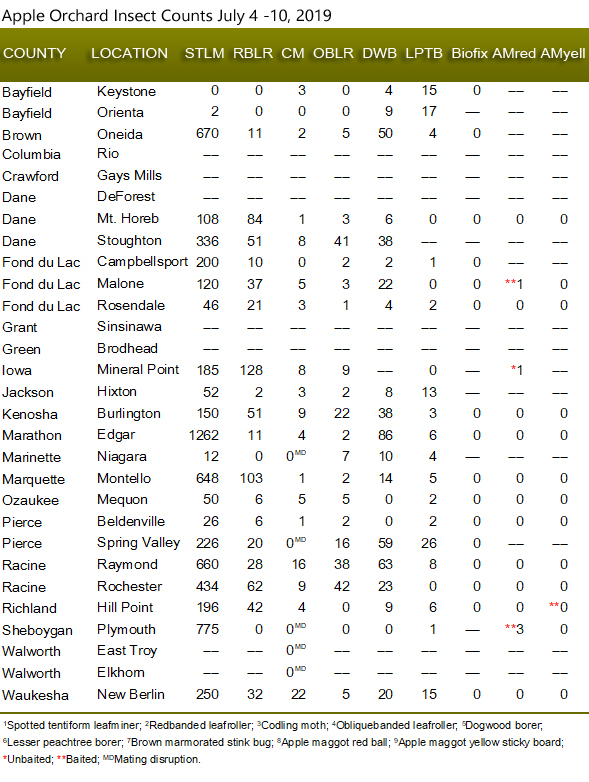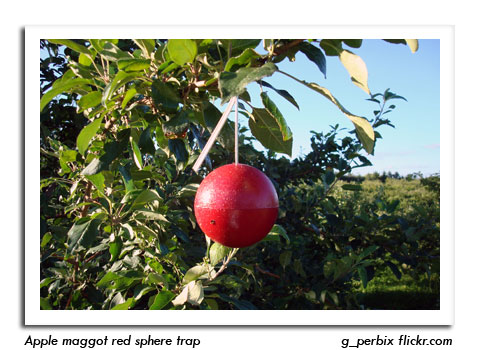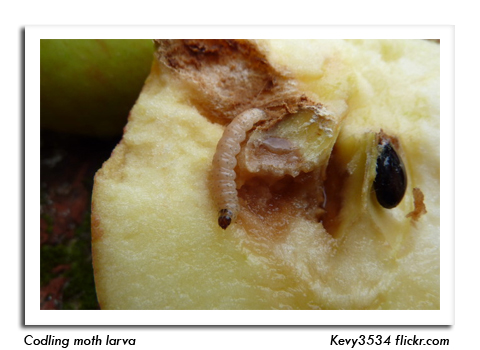
 |
|
|
Fruits
Volume 64 Number 11 Date 07/11/2019 APPLE MAGGOT - Emergence of adults began this week, with captures of 1-2 flies reported from cooperating orchards in Fond du Lac, Iowa and Sheboygan counties. Apple maggot traps should be cleaned of non-target flies periodically and recoated with insect sticky trap material as needed. CODLING MOTH - Egg hatch has peaked in most apple orchards. First-generation larvae are presently in the early to intermediate growth stages, and now is an opportune time to inspect fruits for entry holes and frass to assess codling moth control programs. Moth counts in pheromone traps varied widely this week from 1-22 per trap, with eight sites reporting economic counts of five or more moths. SPOTTED TENTIFORM LEAFMINER - The second flight will likely peak soon at southern and central monitoring sites. Heavy egg laying is expected as long as pheromone traps continue to register high numbers of moths. Apple orchards with populations greater than one mine per leaf or a history of infestation may consider treatment of second generation larvae to reduce build-up of leafminers before the third flight begins in August. The highest trap count for the week ending July 10 was 1,262 moths in Marathon County. OBLIQUEBANDED LEAFROLLER - Developing fruits should be inspected for first-generation leafroller larvae and early damage. Effective control of the current brood will minimize injury and reduce the size of the later generation in August and September. Treatment is justifiable when 3% of terminals are infested, based on examination of five growing points per tree in at least 10 widely separated trees. BROWN MARMORATED STINK BUG - Nymphs are emerging in Dane County. BMSB clear sticky panel traps should be in place to monitor summer stink bug activity. Cooperators are reminded that the sticky traps now supplied by DATCP must be baited with a combination of BMSB lure and the green stink bug (GSB) lure provided with this season's trapping supplies. GRAPE BERRY MOTH - Female moths will soon begin laying second-generation eggs in southern and western Wisconsin vineyards. Scouting for infested fruits and other signs of GBM, particularly in border rows adjacent to wooded areas in the vineyard, is advised. Treatment of perimeter rows, if warranted, usually provides satisfactory control of this pest. The use of pheromone traps to monitor GBM flights and properly timed controls is also strongly recommended. -- Krista Hamilton, DATCP Entomologist 





|
|
|